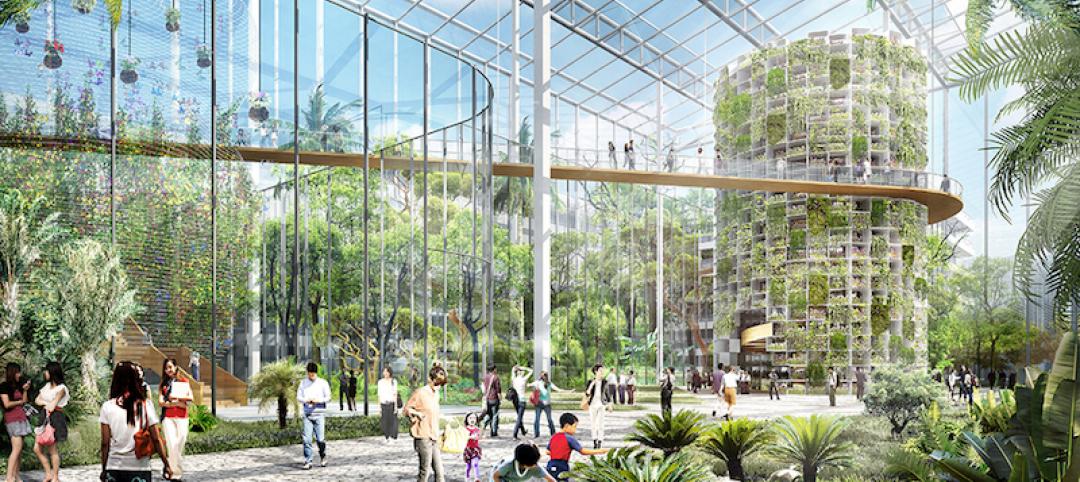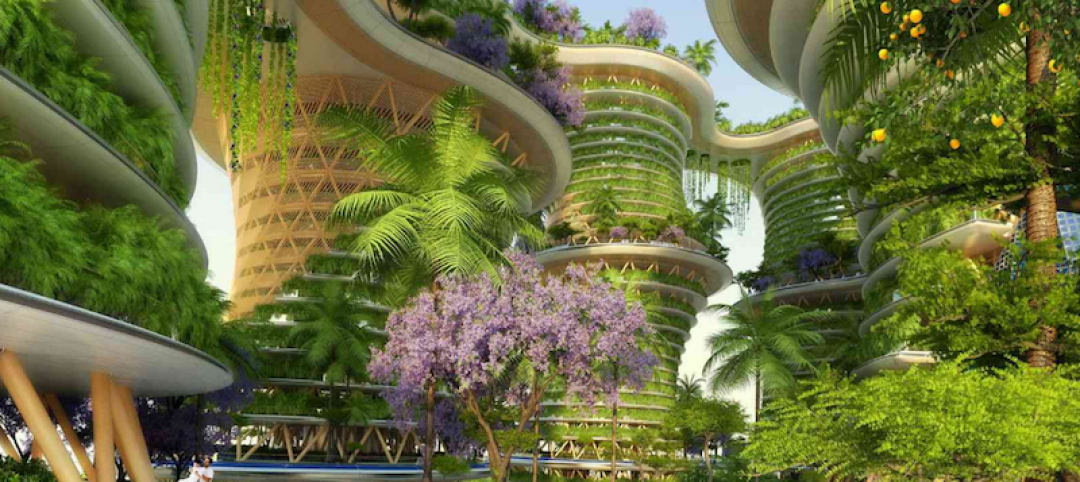As part of its Living Standard initiative, today, the U.S. Green Building Council (USGBC) released a new U.S. public research report titled Standard Issue that sets out to better gauge how the public feels about issues at the core of the green building community’s mission: sustainability, green buildings and the environment. The report takes a closer look at Americans’ views on environmental issues and how the green building industry can be better positioned as a global solution. As part of the report, USGBC commissioned ClearPath Strategies, a global public opinion research company, to conduct qualitative and quantitative research across five regions of the U.S.
“For more than a quarter century now, the USGBC community has worked to prove that buildings are very much living entities that, if created with forethought and compassion, can mitigate climate-related risks,” said Mahesh Ramanujam, president and CEO, USGBC. “But we need to do more. We know that green buildings are only part of the solution to lengthening and bettering the lives of every person on the planet. That’s why the heart of the green building community’s efforts must go beyond construction or efficiency. Instead, our focus must be on what matters most within our buildings: people. This research questions our conventional wisdom and experience and helps inform our strategy for the future.”
USGBC is working to elevate the role of green buildings beyond the environment and economy and focus on the personal health and well-being benefits they provide. The report found that while three-quarters of respondents said environmental problems are very or somewhat important to them, they do very little to address the problems in their own lives, considering it too daunting a task.
The research also shows that people want to live in a healthy environment, but don’t typically associate green buildings with being part of the solution. When asked which terms most strongly relate to the environment and being green, only 11% said green buildings.
When considering the connection between green buildings and personal health, almost a third (32%) indicated they have direct, personal experience with bad health associated with poor environments or living situations. In addition, when ranking how healthy their local environment is on a scale of 1-10, 65% gave it less than an eight.
The research suggests there is a gap between the enormity of the problem and how people seek to address it in their daily lives, and that the green building community can mobilize and inspire change by connecting messaging to healthy outcomes for human beings.
“When people think about emissions, they think about cars, power plants and industries. They rarely think about buildings, leaving the green building community with a messaging mountain to climb,” continued Ramanujam. “We are not reaching the broader population effectively enough to change their behavior or decisions on the scale necessary to combat climate-related risks.”
Through these research findings, USGBC has identified key areas to talk about how green buildings can help, who they help and why they are necessary:
— Promote Healthy Outcomes: Sustainable cities improve people’s lives and better designed spaces help people live longer, healthier and happier lives. Toxin-free materials, good air ventilation and air-purifying plants, all together in a home or workplace, can improve physical health and comfort by reducing symptoms of allergies and respiratory related illnesses like asthma.
— Future Generations: At the rate the planet is warming, catastrophe is almost certain. If we continue to do nothing, our children will ask, ‘How could you do this to us?’ And they will be right. Our future generations deserve to live in a healthy, thriving environment where they live, learn, work and play. The time to act is now.
— Planetary Stakes: With more natural disasters, drought, fires and hunger, our global environment is getting worse every day. Now United Nations climate scientists report that if we do not make dramatic changes in how we live and the fuel we consume, we will have an environmental catastrophe by 2030.
This is the first of several public research reports that will be released through the Living Standard campaign, which was launched at the 2018 Greenbuild International Conference and Expo in Chicago and is focused on the belief that storytelling can lead to a more sustainable world. The campaign aims to highlight stories – big and small – that capture how USGBC, the LEED green building rating system and other sustainability programs are raising the quality of life for people around the world.
The Living Standard study included both qualitative and quantitative research conducted in the fall of 2018. The study included focus groups with millennials, community opinion formers, young parents, commercial and residential developers, and a survey of the general public at large.
Visit livingstandard.org to learn more, join the campaign and submit stories. USGBC will be releasing additional research reports quarterly in 2019, each with a particular issue and regional focus.
Related Stories
Sustainability | Apr 19, 2017
Embracing the WELL Building Standard: The next step in green
When you consider that 90% of our time is spent in buildings, how these environments can contribute to workplace productivity, health, and wellness is the logical next step in the smart building movement.
Multifamily Housing | Apr 18, 2017
Hanging Gardens-inspired CLT residential development proposed for Birmingham
Garden Hill will provide an ‘oasis-like residence’ for Birmingham’s growing, multicultural student population.
Healthcare Facilities | Apr 14, 2017
Nature as therapy
A famed rehab center is reconfigured to make room for more outdoor gardens, parks, and open space.
Green | Apr 14, 2017
Sunqiao looks to bring agriculture back to Shanghai’s urban landscape
Vertical farms will bring new farmable space to the city.
Sustainability | Apr 13, 2017
How to make a concrete bunker livable
SOM’s design for New York’s second Public Safety Answering Center leans on strategically placed windows and the outdoor environment.
Green | Apr 11, 2017
Passivhaus for high-rises? Research demonstrates viability of the stringent standards for tall residential buildings
A new study conducted by FXFOWLE shows that Building Teams can meet stringent Passivhaus performance standards with minimal impact to first cost and aesthetics.
Codes and Standards | Apr 6, 2017
Product-specific EPDs seen as key aid to earning green building credits
The product-specific EPDs allow designers to more quickly earn a LEED v4 credit in the Materials & Resources category.
Sustainability | Apr 4, 2017
Six connected CLT towers create an urban forest in India
The mixed-use towers would each rise 36 stories into the sky and connect via rooftop skybridges.
Green | Mar 29, 2017
Copenhagen Zoo and BIG unveil yin yang-shaped panda habitat
The new habitat will sit between two existing buildings, including the Elephant House designed by Norman Foster.
Green | Feb 10, 2017
Radical proposal would transform Chicago’s Lake Shore Drive and create new lakefront park space
Over 70 new acres of public space would be created between Ohio Street and North Avenue.
















